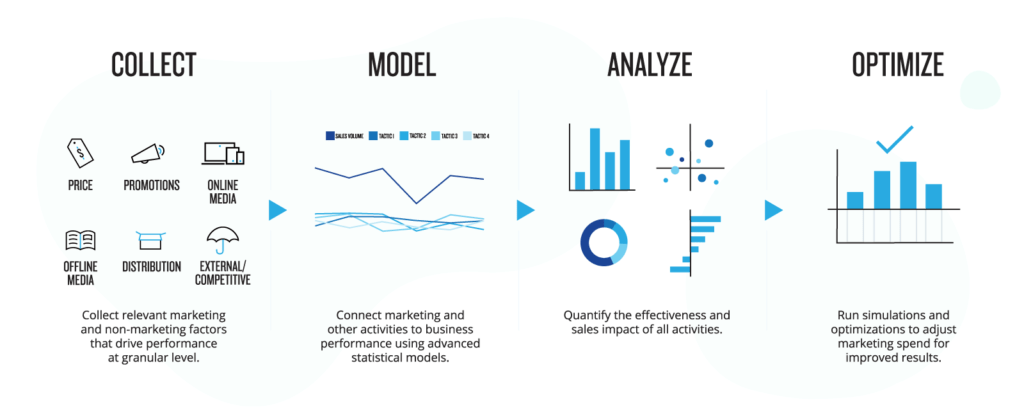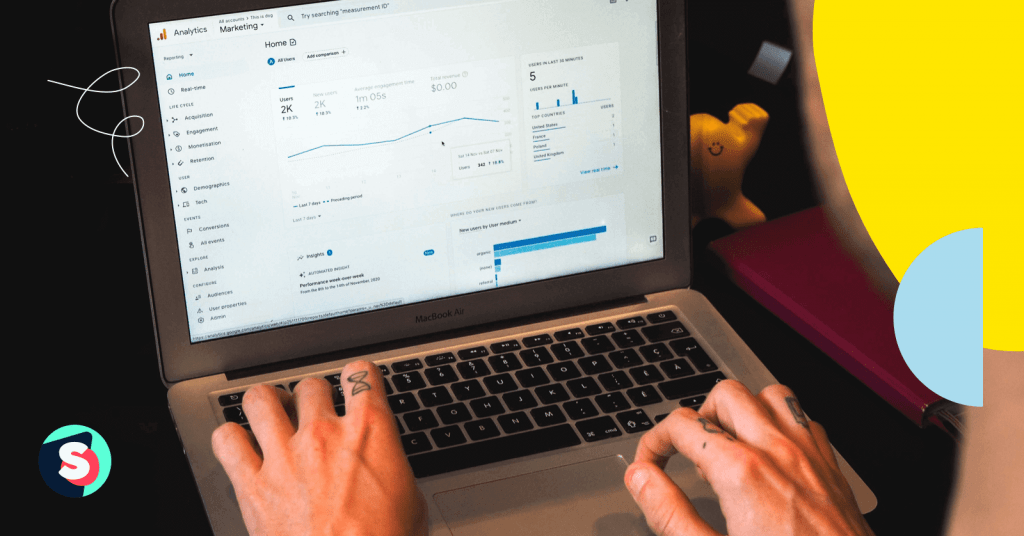The Marketing Mix Model is an important part of any marketing plan. As the digital ecosystem rapidly evolves, many brands are leveraging a wider array of channels and techniques to reach customers. Marketing Mix Analysis using the Marketing Mix Model can help you to find out which activities are actually driving revenue and profit, and where you should be spending to maximize impact. The Marketing Mix Model determines the effectiveness of each of the marketing elements in terms of their contribution to sales. The results of such analysis can be used to adjust marketing tactics and strategies, and optimize the marketing plan. In this article, you will learn how to do the Marketing Mix Analysis using the Marketing Mix Model.
What is the Marketing Mix Model?
The Marketing Mix Model is used as a decision-making tool by brands to estimate the effectiveness of various marketing initiatives in increasing Return on Investment (ROI). The Marketing Mix Model lets your brand understand how various marketing activities are driving the business metrics of a product.
We all know about the 4Ps of the marketing mix. It consists of 4 main elements: product, price, distribution channels (Place), and product promotion (Promotion).
Well, the goal of the Marketing Mix Model is to measure how much success came from each of these elements and create the optimal mix of these four elements to meet your company’s objectives and maximize success. It does this by taking data from all the factors that may be influencing the success of your marketing channels and performing a regression analysis.
How does a Marketing Mix Model work?
Marketing Mix Model uses historical data (such as sales, costs of all past ad campaigns, and RoI) and regression techniques to tease out each channel’s contribution towards your KPI. This is essentially done by identifying the variations in channel spend and the corresponding variations in the KPI.
Related article: How to define and measure social media ROI for your business
4 stages of Marketing Mixed Model
Nielsen points to 4 stages of the Marketing Mix Modeling process.

These four phases of a Marketing Mix Modeling are:
- Data collection and integrity
- Modeling
- Model-based business measures
- Optimization and simulation
1. Data collection and integrity
Collect the data that will be used in the statistical model and determine which products will be analyzed. Within the collection stage of marketing mix modeling, Marketing Mix Modeling breaks down business metrics to estimate product demand and to differentiate between contributions from incremental drivers vs. base drivers.

2. Modeling
Marketing Mix Model uses the principles of regression analysis. A regression analysis evaluates the impact of multiple independent variables on a single dependent variable, such as your sales figures. It plots these variables on a chart, then calculates a “regression line” that attempts to explain the relationship between the independent variables and the dependent variable. These techniques are used to predict a future response based on the response history and to understand the potential timeline for advertising effectiveness and how to optimize the marketing mix to compensate for these factors.
3. Analyse (Model-based business measures)
In this stage, the outputs of your chosen model will be examined. These outputs will come in the form of decomposition of sales, often represented by a pie chart, showing the data down into volume for each modeled tactic. Interpret the model-based outputs and look at your campaign’s 3 significant metrics: effectiveness, efficiency, and Marketing Return on Investment. You will be able to gain information on these metrics for your marketing efforts as a whole, and for each tactic individually. Measure incrementality by the campaign for all tactics so you can better understand the drivers of incremental profit.
4. Optimization and simulation
The final phase of a Marketing Mix Modeling turns your outputs into inputs for future marketing planning. This means you use the results of your analysis to optimize your marketing mix for your next planning period. You can conduct a simulation (or prediction) exercise (also known as “What-if Analysis”) and determine the best combination of tactics for reaching your goals.
Helpful resources from Mass Analytics
To sum up,
The Marketing Mix Model seeks to determine how much success was generated by each component of your marketing strategy, and forecast what future success can be created through altering and optimizing the marketing mix. The marketing mix model can be conducted to help you see the bigger picture of how effectively all your marketing channels are working together.




